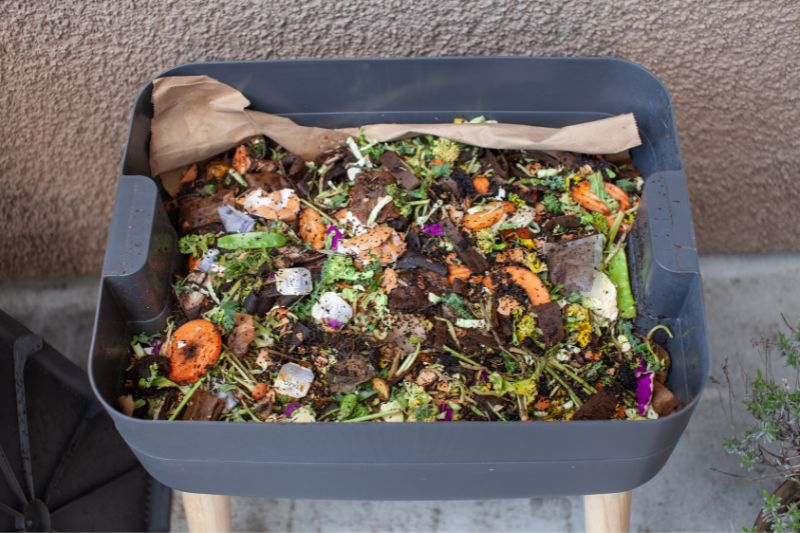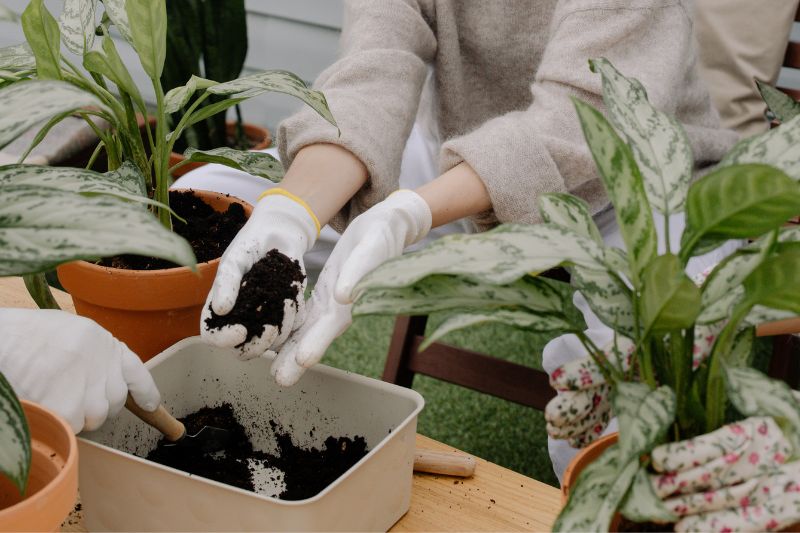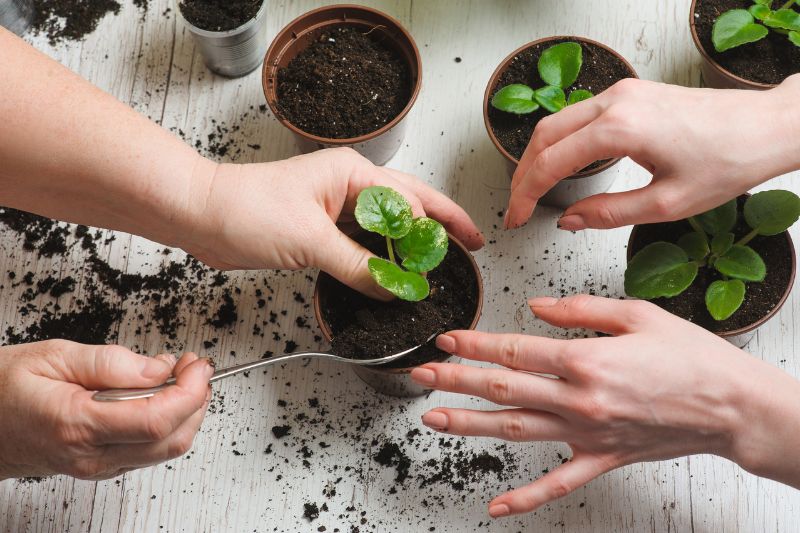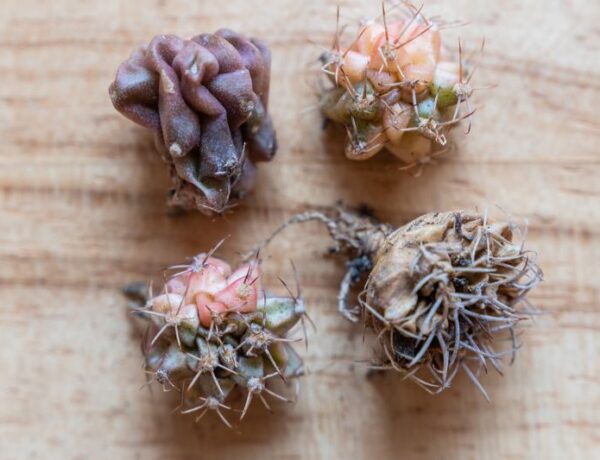As indoor gardening lovers, we are always on the lookout for ways to improve the health and growth of our plants. One of the most important factors in ensuring they thrive is choosing the right fertilizer. Worm castings, a natural byproduct of the vermicomposting process, have gained popularity in recent years as an effective and organic fertilizer for indoor plants.
Now, let’s see what it can do!
Table of Contents
The Role of Worm Castings in Indoor Plant Growth
Worm castings, also known as worm manure, worm humus or “black gold”, are a nutrient-rich, organic material produced by earthworms as they consume and break down organic matter. This natural fertilizer is teeming with essential nutrients like nitrogen, phosphorus, and potassium, as well as trace minerals such as calcium, magnesium, and iron. In addition to these vital nutrients, worm castings also contain beneficial microorganisms, including bacteria, fungi, and protozoa, that contribute to a healthy soil ecosystem.
As a fertilizer for your indoor plants, it offers a range of benefits that promote growth and overall plant health, coming with nutrients that are readily available to absorb. The presence of beneficial microorganisms helps to suppress harmful pathogens, reducing the likelihood of diseases and pest infestations. Moreover, worm castings can also improve the soil’s structure and its ability to retain moisture, which is especially beneficial for indoor plants that are often grown in pots with limited soil volume.
Another advantage of using this fertilizer for your indoor plants is that it promotes strong root development. The humic acids and growth hormones found in worm castings encourage root growth, which enhances the plant’s ability to absorb water and nutrients. A robust root system is crucial for supporting the plant’s above-ground growth, as well as its overall strength and resilience.
How Worm Castings are Produced

Worm castings are produced through a process called vermicomposting, which is the decomposition of organic matter by earthworms, primarily red wigglers (Eisenia fetida), who consume organic waste and produce castings as their waste product.
In a nutshell, worms are placed in a controlled environment called a worm bin, which is filled with a mixture of bedding materials such as shredded newspaper, cardboard, or coconut coir. These materials provide the worms with a moist and well-aerated habitat to thrive. Then, organic waste, such as fruit and vegetable scraps, coffee grounds, and eggshells, is added to the bin as a food source for the worms.
They consume the organic matter, breaking it down and producing a dark, crumbly, and odorless material that is ready to be used as an organic fertilizer for your plants.
When to Use Worm Castings for Indoor Plants

This versatile fertilizer that can be used at various stages of a plant’s growth cycle. Here are some of the best times and ways to incorporate it into your indoor gardening routine:
During repotting
One of the most effective times to use worm castings is when repotting your indoor plants. As plants grow, they often require a larger container to accommodate their expanding root systems. When repotting, mix worm castings into the new potting soil at a ratio of about 1:4, meaning one part worm castings to four parts soil. This will provide a nutrient-rich environment for the plant’s roots to grow and establish themselves in the new container.
As a top dressing
Another simple way to use worm castings is by applying them as a top dressing. Sprinkle a thin layer of worm castings, approximately 1/4 to 1/2 inch thick, on the surface of the soil around the base of your indoor plants. This will gradually release nutrients into the soil as you water your plants, providing a slow and steady supply of essential elements to support growth and overall plant health.
In a liquid form
Worm castings can also be used to create a nutrient-rich liquid fertilizer, often referred to as “worm tea.” To make worm tea, mix one cup of castings with one gallon of water and let the mixture steep for 24 to 48 hours.
You can use a gentle aeration method, such as an aquarium pump, to increase the oxygen content and promote the growth of beneficial microorganisms. After steeping, strain the liquid and use it to water your indoor plants. This worm tea not only provides valuable nutrients but also helps improve the soil’s microbial activity.
During the active growth phase
Worm castings are best used when indoor plants are actively growing, which is typically during the spring and summer months. During this period, plants require more nutrients to support their growth and development. Using them as a fertilizer during the active growth phase can help meet your plants’ increased nutritional needs.
Advantages and Disadvantages of Worm Castings

Using worm castings offers numerous advantages for your houseplants, but it’s also essential to consider potential disadvantages to make the best decisions for your needs.
Advantages:
- Improved soil structure: Worm castings help improve soil structure by increasing aeration, drainage, and water retention. This creates an ideal environment for healthy root growth and development, leading to stronger and more resilient plants.
- Slow-release nutrients: They provide a slow-release source of essential nutrients such as nitrogen, phosphorus, and potassium, as well as trace minerals. This gradual nutrient release ensures that plants receive a steady supply of nutrients over time, reducing the risk of nutrient burn or deficiency.
- Beneficial microorganisms: It contains a diverse population of beneficial microorganisms, including bacteria, fungi, and protozoa. These microorganisms help break down organic matter, making nutrients more readily available to plants, and can also protect plants from diseases and harmful pathogens.
- Non-toxic and eco-friendly: As a natural, organic fertilizer, worm castings are non-toxic and safe for both plants and humans. They are also an environmentally friendly option, as they are produced through the recycling of organic waste.
Disadvantages:
- Cost: One of the main drawbacks is their cost. They can be more expensive than other types of fertilizers, particularly synthetic options. However, many gardeners find the benefits of worm castings to be worth the investment.
- Accessibility: May not be readily available in all areas or at all gardening supply stores. This can make it more challenging to access this valuable resource. However, you can always try and produce your own worm castings at home through vermicomposting.
- Limited nutrient content: While worm castings provide a well-balanced, slow-release source of nutrients, they may not contain sufficient amounts of specific nutrients to address severe deficiencies in your indoor plants. In these cases, you may need to supplement with additional targeted fertilizers.
Frequently Asked Questions about Worm Castings
Yes, worm castings are a versatile and well-balanced organic fertilizer that can be used for most indoor plants.
As a top dressing, apply a thin layer of approximately 1/4 to 1/2 inch thick around the base of your plants. When mixing them into potting soil, use a ratio of about 1:4 (one part worm castings to four parts soil).
Yes, you can produce them at home through vermicomposting. Set up a worm bin with bedding materials and red wiggler worms, and provide them with organic waste as a food source. Over time, the worms will consume the waste and produce nutrient-rich castings that you can harvest and use for your indoor plants.
Other organic fertilizers can also benefit your indoor plants. Some alternatives include compost, well-rotted manure, fish emulsion, and seaweed extract. Choose a fertilizer that best suits your plants’ needs and your gardening preferences.
Conclusion
Worm castings are a valuable and effective organic fertilizer for indoor plants, offering numerous benefits such as improved soil structure, slow-release nutrients, and beneficial microorganisms. By understanding when and how to use worm castings and considering potential disadvantages, you can provide your indoor plants with the nutrients they need to thrive in a natural and sustainable manner.
Remember to monitor your plants’ health and adjust your fertilizer routine as needed to ensure optimal growth and wellbeing. With the right care and attention, worm castings can play a crucial role in the success of your indoor gardening endeavors.






No Comments